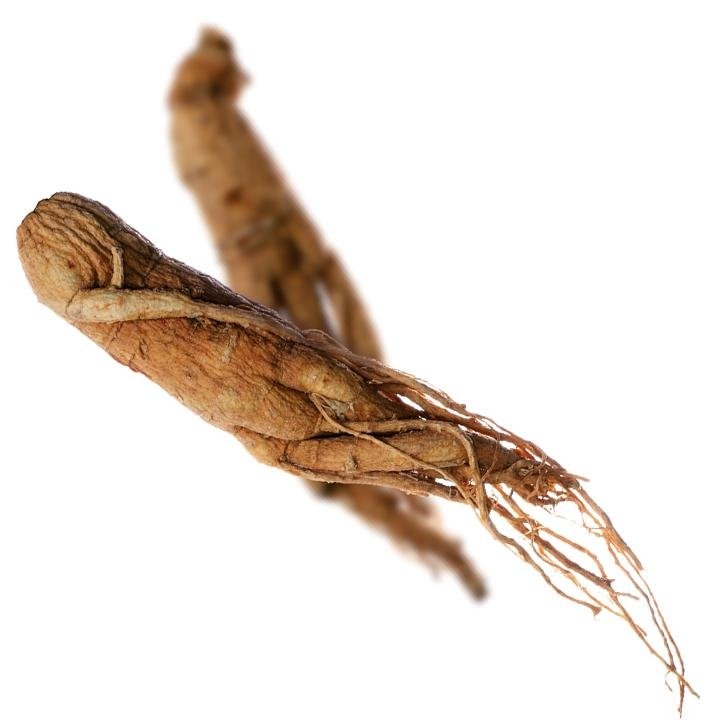Description
Spinose shrub that grows up to 3 m high with numerous small and delicate thorns. The rhizome is knotty in the shape of an irregular cylinder with a diameter of 1.5 to 4.0 cm, and is fragmented and bended, often winding, rarely branched. The bark, 0.5 to 2 mm thick, stuck hardly to the xylem. The duramen is light brownish colored and the alburnum is pale yellow. The fault produces, in the bark, thin and short grains and is rudely fibrous, especially in the internal part of the xylem. The lower side presents numerous roots. Roots are cylindrical and knotty, 3.5 to 15 cm long and with a diameter of 0.3 to 1.5 cm. Older stems usually don’t have thorns; instead youngest ones are densely covered with flexible thorns. Leaves are petiolated, compound palmed, with reddish stems usually made up of 5 elliptical leaflets with seen edges. Flowers, small, simple, spherical, polygamous grow alone or in couple in the stam ends. They meet in globose umbels, with long peduncles inserted in the leave base. The floral parts appear in groups of 5, including epigynous ovaries surrounded by a disk which secretes nectar. Female flowers are yellowish and male ones are purplish. The fruit is a drupe or a black flashy berry, and it contains the same number of nuclei and carpels. Siberian Ginseng belongs to the Araliaceae family.
It comes from the Northeast of Asia, especially abundant in the East of Siberia although it is distributed also in China, Korea and Japan. This species grows in the South of the far East, in eastern countries, in the coastal zones of Chabarovsk region, in Amur and Primorsk region and in Sachalin Island. It develops in the undergrowth of the little thick and cold woods (taiga) in the half mountain and plains. The roots of the wild or spontaneous plants which are picked in spring or in autumn are often used. It has been proved that if it is picked in October, it has much more efficacy. Smell: weak and aromatic. Taste: bitter, sour, persistent.
Part used
The root and the rhizome.
Indications
- Physical and intellectual exhaustion, fatigue, despondency and in those manifestations which present organic weakness.
- Asthenia and convalescence.
- Sportspeople.
- Preparation of exams.
- Arterial hypotension.
- Stress.
- Chronic infectious states. Prevention of colds and flu.
- Senescence disorders and in order to improve the alert and the learning.
- Hypercholesterolemia, prevention of arteriosclerosis.
- Chronic fatigue syndrome.
- Functional neuropsychological disorders: neurosis, vegetative dystonia, climacteric neurosis.
- Infections caused by herpes simplex type 2.
- Lack of appetite.
- It contributes to the treatment with radiation or chemotherapy.
- Low hemoglobin. Anemias.
- Prostate alterations.
- Impotence.
- Visual alterations (it improves the vision).
Bibliography
Plantas Medicinales. Thérapeutique-Toxicité.Christiane Vigneau. Masson, Paris 1985.
The Complete German Commission E Monographs. Therapeutic Guide To Herbal Medicines. Mark Blumenthal. American Botanical Council 1998.
Pharmacognosy, Phytochemistry, Medicinal Plants. Jean Bruneton. Lavoisier Publishing.
Fitoterapia Aplicada.J.B. Peris, G. Stübing, B.Vanaclocha.Colegio Oficial de Farmacéuticos de Valencia 1995.
Fitoterapia: Vademecum de Prescripción. Plantas Medicinales.Colaboran: Asociación española de médicos naturistas. Colegio Oficial de Farmacéuticos de Vizcaya.
Botanical Influences on ILness.Melvyn R. Werbach, M.D. Michael T. Murray, N.D.
Plantes Médicinales des régions tempérees.L. Bézanger-Beauquesne et M. Pinkas. M. Torch et F.TrotinMaloine S.A. Editeur. Paris 1980.
Las plantas medicinales. Guía práctica con remedios eficaces para los trastornos más comunes.Penélope Od
British Herbal Pharmacopoeia 1990.
Farmacognosia. G.E. Trease y W. C.Evans. CECSA.
Pharmacognosy. 9th edition. Varro E. Tyler – Lynn R. Brady – James E. Robbers.
100 Plantes Medicinales. Docteur Max Rombi. Ediciones Romart 1998.
Farmacognosia 2ª Edición. Jean Bruneton. Ediciones Acribia S.A. 2001.
Bulletin officiel Nº 90/22 bis. Ministère des Affaires Sociales et de la Solidarité.
French Public Health Code.
